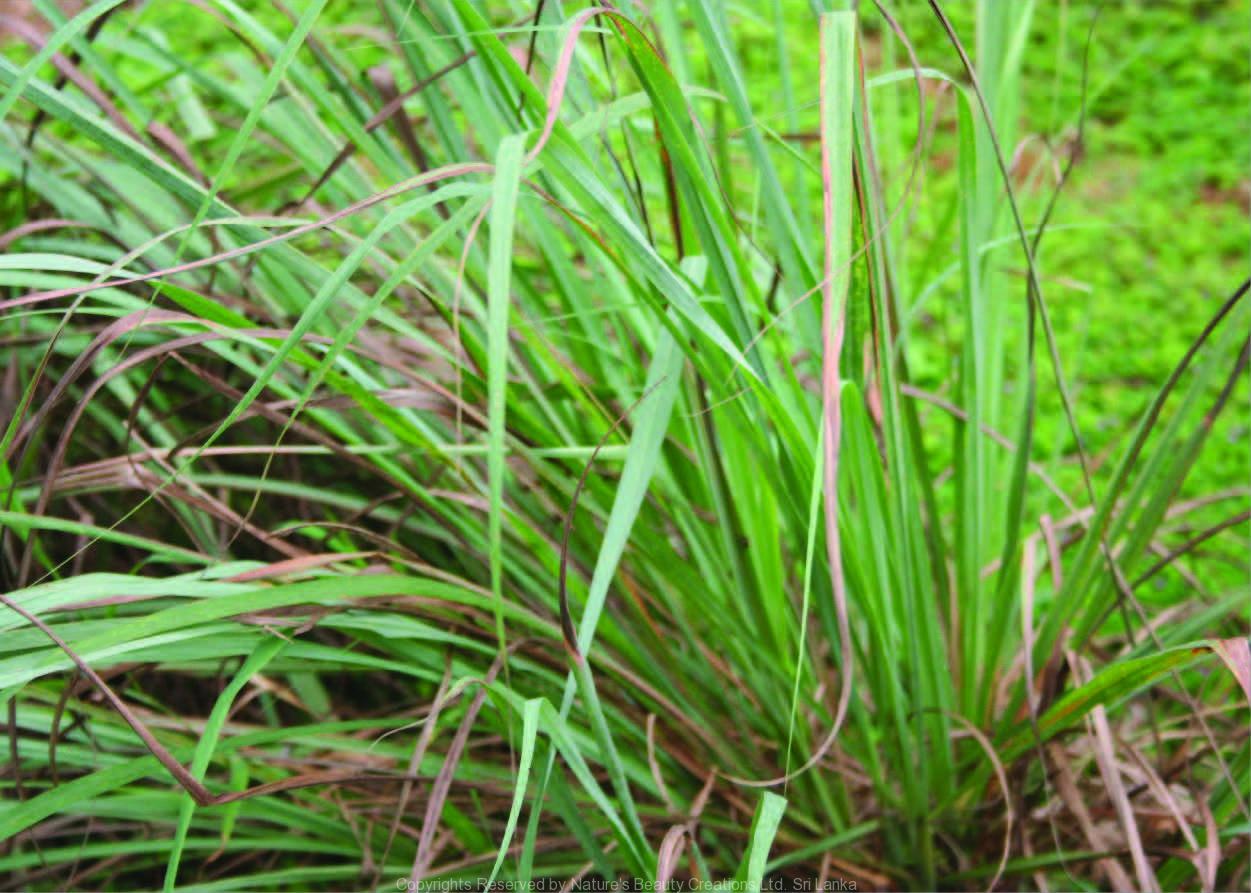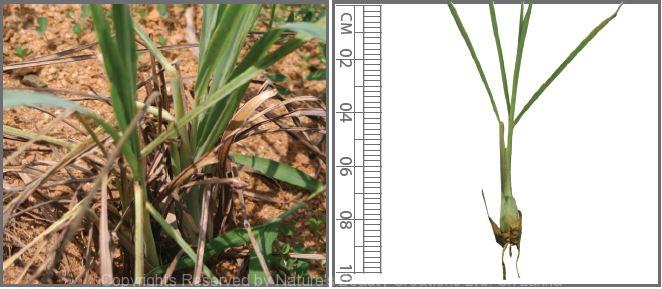

Traditional Knowledge
Useful plant parts :
Whole plant, leaf and tiller
Uses in traditional medicine :
- Crushed tiller juice is given with old bee honey to treat indigestion in children
- Hot leaf infusion is used to wash swellings in joints
- Whole plant is used for flatulent and spasmodic ailments gastric irritability, cholera, arrest vomiting, chronic rheumatism, sprains and fever
Scientific Research
Chemical constituents:
Terpenes: cymbopogone and cymbopogonol from leaf wax; geranial, neral, citronellol, citral, terpinolene, and myrecene from essential oil of leaves
Bioactivity :
Aqueous extracts of leaves: anti-inflammatory; essential oil of leaves: antimicrobial, antimalarial, antiulcer, anticancer, antinociceptive and anticonvalsant; decoction of leaves: hypotensive; plant extract: nephroprotective; citronellol: antinociceptive; shampoo cantanining essential oil: active against dandruff causing fungi
Clinical:
References : Bassolé, I. H. N. et al., (2011), Chemical composition and antimicrobial activity of Cymbopogon citratus and Cymbopogon giganteus essential oils alone and in combination, Phytomedicine, 18, 1070-1074. Bidinotto, L. T. et al., (2011), Protective effects of lemongrass (Cymbopogon citratus Stapf) essential oil on DNA damage and carcino- genesis in female Balb/C mice, J Appl Toxicol, 31(6), 536-44. Blanco, M. M. et al., (2009), Neurobehavioral effect of essential oil of Cymbopogon citratus in mice, Phytomedicine, 16, 265-270. Brito, R. G. et al., (2012), Citronellol, a monoterpene alcohol, reduces nociceptive and inflammatory activities in rodents, J Nat Med, 66(4), 637-44. Carbajal, D. et al., (1989), Pharmacological study of Cymbopogon citratus leaves, Journal of Ethnopharmacology, 25(1), 103-107. Fernandes, C. et al., (2012), Investigation of the mechanisms underlying the gastroprotective effect of Cymbopogon citratus essential oil, J Young Pharm, 4(1), 28-32. Francisco, V. et al., (2011), Cymbopogon citratus as source of new and safe anti-inflammatory drugs: Bio-guided assay using lipopolysaccharide- stimulated macrophages, Journal of Ethnopharmacology, 133, 818-827. Hanson, S. W. et al., (1976), Cymbopogonol, A new Triterpenoid from Cymbopogon Citratus, Phytochemistry, 15, 1074-1075. Shah, G. et al., (2011), Scientific basis for the therapeutic use of Cymbopogon citratus, stapf (Lemon grass), J Adv Pharm Technol Res, 2(1), 3-8. Tchoumbougnang, F. et al., (2005), In Vivo Antimalarial Activity of Essential Oils from Cymbopogon citratus and Ocimum gratissimum on Mice Infected with Plasmodium berghei, Planta Med, 71(1), 20-23. Ullah, N. et al., (2013), Cymbopogon citratus Protects against the Renal Injury Induced by Toxic Doses of Aminoglycosides in Rabbits, Indian J Pharm Sci, 75(2), 241-6. Viana, G. S. B. et al., (2000), Antinociceptive effect of the essential oil from Cymbopogon citratus in mice, Journal of Ethnopharmacology, 70(3), 323–327. Wuthi-Udomlert, M. et al., (2011), Inhibitory effect of formulated lemongrass shampoo on Malassezia furfur: a yeast associated with dandruff, Southeast Asian J Trop Med Public Health, 42(2), 363-9.
Copyrights Reserved By
Natures Beauty Creations



